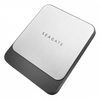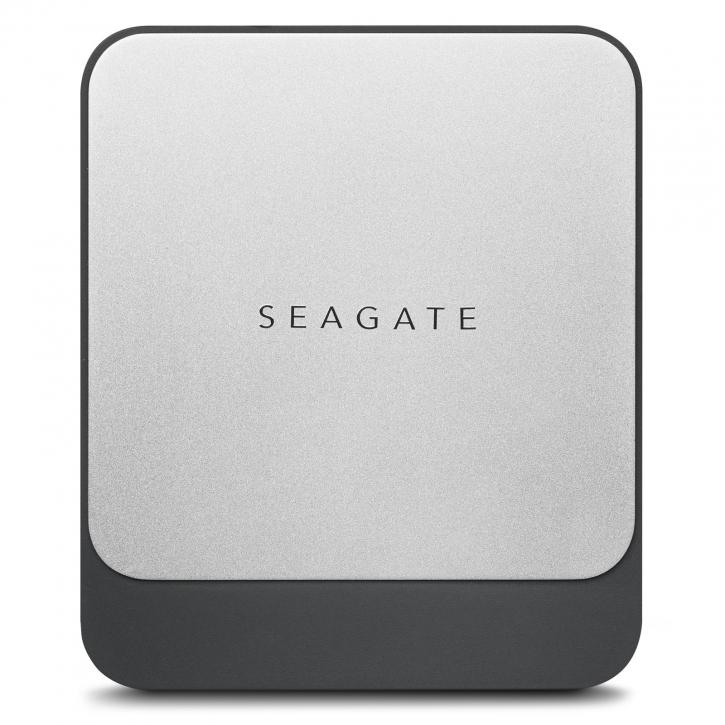Introduction
Seagate Fast SSD - 1 TB Portable NAS
Raise a hand if you've heard of Seagate? Most of you? Fair enough. Most well known for their wide array of internal hard drives, ranging from your standard 1TB 7200rpm affair, all the way to full enterprise-grade NAS/Surveillance drives in the Ironwolf/Skyhawk range, Seagate has also started to expand in the SSD space. If you'll just allow me a small moment of praise, here, I really do like the product line names and visuals Seagate use for their HDDs. There is something highly appealing about it, and that isn't a praise that regularly gets leveled at a normally fairly boring part of your PC. Anyway. Seagate is now offering a 2.5'' flash version of their venerable Barracuda drive, with specs exactly as you'd expect. 3D TLC memory and speeds of up to 560/540 MB/s read/write. This is an entirely standard affair in 2018, and should be expected of even a regular grade SSD. What still isn't so common, however, is the wide adoption of external SSDs. When most of us think of external storage, we think of a little 2.5'' 'box' that houses a regular mechanical hard drive. Seagate do them. Western Digital do them. They're often bundled with some form of backup software, as well as options of additional security (e.g. drive unlock via passkey), and so on.
Who is this targeted at? I would say, realistically, the creative professional who needs on the go storage. Those large projects in FCPX/Premiere, or Adobe Illustrator/Photoshop? What about CAD? All, in my mind, are perfect targets for this product. An average edited photo that I take/edit for the purposes of reviews can be as large as 17mb with post-processing applied. Multiply that by a fair bit for someone who works with larger/more complex projects, and multiple, and suddenly you have a very large local folder that really could do with being stored elsewhere. Trouble is, you don't want to wait hours for it to transfer back over? Enter the 1TB 'Fast SSD' from Seagate... though it must be said, points are certainly not going their way for creativity on the naming scheme.
So, with all of that said and done, what do have here? A very sleek looking (it must be said), 1TB, external SSD that offers an interface with either USB-A or USB-C (both a USB-C to USB-C or USB-C to USB-A cable are offered in the box - Apple, take note). The USB-C is of particular note to me, as we are now seeing the advent of USB-C ports on even middle of road laptops, though Thunderbolt they will not be. That, however, does not matter for this unit, and USB-C is still good for a 5 Gbps transfer rate, as long as you are using that USB-C interface at both ends. If not, you will be capped at the speed of your slowest port. In 2018, realistically, that is going to be USB 3.0, which is still a widely adopted and entirely adequate standard for 99% of the world's user base. In terms of read/write speed, the unit is reportedly good for 540 and 500 Mb/s respectively, which really isn't all that much slower than Seagate's 2.5'' internal Barracuda SSD. Naturally, we will be testing this in the review proper.
Some of you more beady-eyed readers may have noticed that Seagate claims the above speed whilst only using a USB 3.0 interface at 5 Gbps, and not the USB 3.1 Gen 2 interface used by Samsung's competing 'T5' drive, the review of which you can find here. It will be interesting to see, therefore, whether the Seagate unit can, A) Match the T5 with a 'slower' interface, and B) Actually achieve the speeds claimed. If it can, then the Seagate drive will be, in our eyes, one of the fastest external SSDs on the market. That's quite an accolade. I do, initially, have my doubts (I have to be honest), as whilst 5 Gbps is the theoretical maximum speed of regular USB 3.0 (or, as it is called now, USB 3.1 Gen 1), other factors do often conspire against it to reduce the effective operating speed to below the 500 MB/s mark. As such, I will be very interested to see the overall performance, given the potential limitation as outlined above.
The drive comes with a very respectable 3-year warranty and is evidently designed to appeal to the modern user. Very sleek, stylish, and coming in a two-tone greyscale colour scheme (Seagate adopting the Ford Model T approach, perhaps?), the model we have here today is certainly ticking all the boxes from a visual standpoint. Size wise, we are looking at 94mm x 74mm x 9mm. Yes, just 9mm thick. Yikes. It's light, too, weighing in at just 82g. I might be a little old school but at least your older external drives had some heft... Naturally, that is not a real complaint. 82g for 1TB of 540/500 Mb/s storage? Sign me up, please.
The product is fully compatible with Seagate's range of drive tools. These are:
- Disk Wizard: Initialise, create/format partitions, and transfer/backup your data.
- Seatools for Windows: Quick disk diagnostic tool.
- Seagate Toolkit for Windows: Backup and sync specific files.
What about all you MacOS users out there? Well, you'll also be happy, especially with 2016, 2017, and 2018 variants of the MacBook Pro running only USB-C Thunderbolt-enabled ports. Given the target audience of the MacBook Pros, I think it's safe to say the content creators amongst you will be pretty pleased at the fact that the 'Fast SSD' from Seagate is instantly compatible with MacOS, using the exFAT file system. Well, that was quite the intro, ok, on with the review. Next page my fellow guru.


